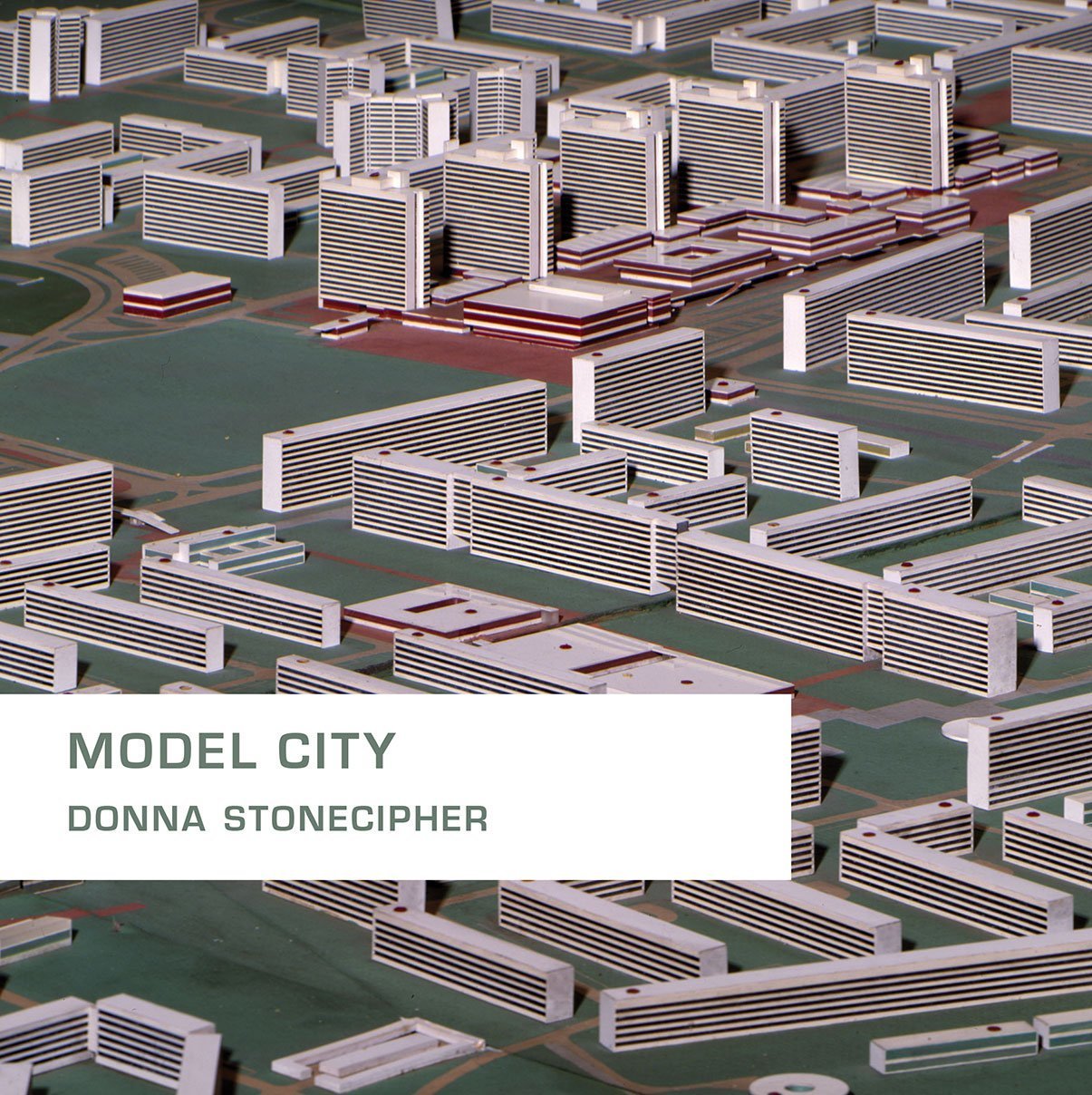Shearsman Store
Donna Stonecipher - Model City
Published 2015. Paperback, 94pp, 8 x 8 ins, £12.95 / $20
ISBN 9781848613881 [Download a sample PDF from this book here.]
Model City
answers its own inaugural question ‘What was it like?’ in 288 different ways. The accumulation of these answers offers a form of sustained and refined negative capability, which by turns is wry, profound and abundant with an unspecified longing for the passing ghost of European idealism. In the various enquiries and explorations of Model City
this is also the mapping of a lived condition and its relationships not readily found on every street corner – nor in the broken ideologies from the populist bargain basement proffered by our political cadres. What becomes apparent is that the model city/ Model City
exists by virtue of a poet’s wit and inventiveness, in its accomplished and elegantly measured language. Stonecipher’s mesmerizing, epigrammatic fables establish the off-centre polis where, oddly, we find ourselves at home. — Kelvin Corcoran
Model City
is built from a missing antecedent, an “it” as mysterious as it is familiar: What was it like? What was what like? One’s life? The city from which one fled? The city to which one did so? The last century? The one before that? The weaving in and out of traffic? Love? Candlelight from a curtained window or the dull, digital glow of a smart phone from the balcony below? Here, those old utopic dreams and social experiments collide with the age of excess information, leaving behind broken bits of experience: precise, exacting, aphoristic, arresting—the emotional residue of just how one deals with one’s tiny-cog-in-a-big-machine conundrum allowed to curdle into language as concerned with form and structure, with feats of architecture and engineering, as it is with real human relationships. This book is a marvel. — Noah Eli Gordon
I can’t say exactly what it was like to read Model City. At first I thought it was about Berlin, a city repeatedly remodeled by successive regimes, as if there was something about the city’s fiction that allows it to be instrumentalized as origin. Then I thought the city could be any city under siege by neoliberal policies, where tourism, chain stores and rising rents push the marginal to the margins, where the corporate city advertises itself to itself to generate more corporate partnerships, resulting in a cityscape of sameness. (This is one reason the book’s organizing architecture tests a simile’s promise against the threat of hollow similitude.) Finally I sensed that any one of us could be a body under siege by neoliberal façades. Sentence after sentence dwells in this unsettling somatic state, and the “feeling of uncertainty one gets in an elevator that opens on both sides” is also the feeling of a deeply ethical psychogeographic inquiry opening simultaneously into prose and poem. — Christian Hawkey
Read a "non-review" of this book at Hyperallergic
here.
Order From:
Order
from UK Bookshop.org .
Order
from amazon.co.uk
Order
from Barnes and Noble.com
Order from amazon.com
Order from Small Press Distribution (SPD)
Shearsman Books Ltd. All rights reserved
Shearsman Books Ltd registered office 30–31 St. James Place, Mangotsfield, Bristol BS16 9JB ( address not for correspondence ). Registered in England as company no. 4910496.



